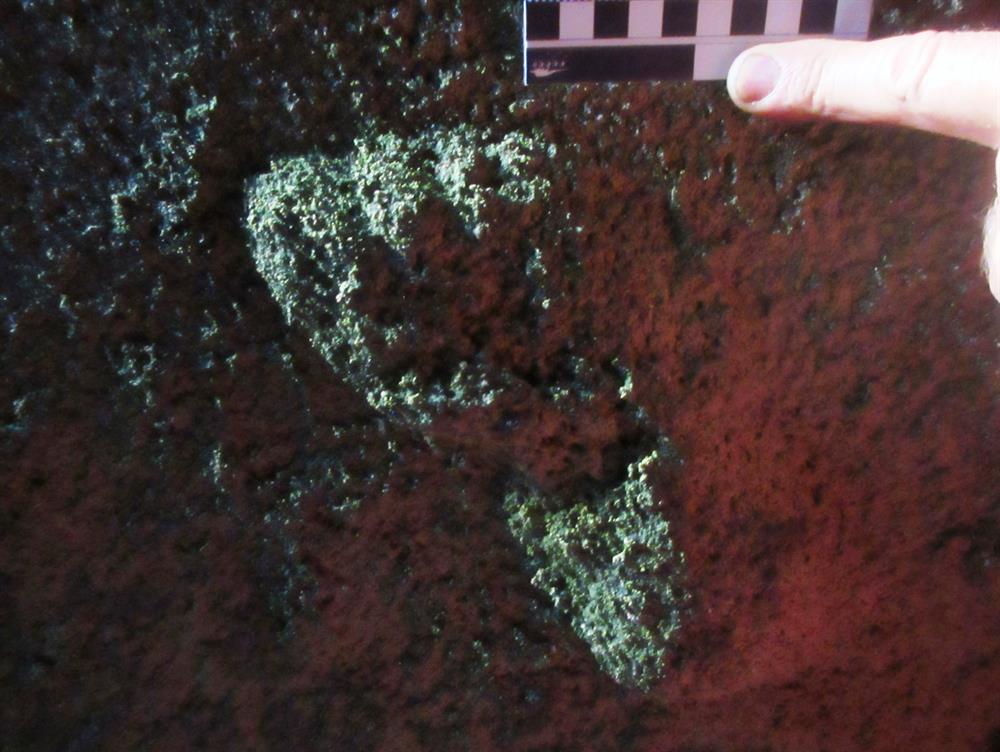MOSSEL BAY NEWS - A semi-retired medical doctor who grew up in Great Brak River has found tracks "probably made by humans" in the late ice age in a cave near Buffalo Bay, which is near Knysna.
It is believed the tracks - in fossilised rock - are about 90 000 years old. This is the first reported hominin track site from this time period, so the finding has huge international significance.
A hominin is described as a "primate of the tribe Hominini, which consists of species regarded as human, directly ancestral to humans, or very closely related to humans".
A report by the medical doctor, Charles Helm, and other international researchers on the findings, was published in the journal, Scientific Reports, on 28 February.
The track site - which has up to 40 "footprints" - is the "largest and best preserved archive of late ice age hominin tracks ever found", according to the report. American scientist, Curtis Marean, of Mossel Bay's Pinnacle Point caves fame, is one of the report authors.
Dr Helm, now based in Canada, still has a home on Great Brak River island, which he uses as his base when he comes exploring the Southern Cape coast each year.
He is due to give a talk at the Great Brak River Museum later this year. While still young, after leaving Great Brak River for Cape Town, he used to spend holidays with his grandparents in their home on the island.
Tracks on the southern surface of the site, with 10cm scale bars. Photo: Charles Helm
Describing his excitement at his find, Dr Helm told the Mossel Bay Advertiser: "Crawling into the cave, I noted many tracks on the ceiling. Suddenly I recognised toes on one of them. I didn't have a torch with me, but the natural light was good enough.
"I called my fellow explorers, and none of us had any doubt. But our initial emotions were a mix of disbelief and joy, along with the realisation of the work that would lie ahead.
"We had discovered more than 100 track sites along the coast, and always had hoped to find human tracks, as we knew humans would have been in the area at the time the dunes formed. It was a beautiful moment in our lives, one we will never forget.
"The discovery was made by myself, my wife Linda and colleague Guy Thesen on 17 October 2016," Dr Helm says.
Thesen hails from Belvedere, Knysna, where there are many Thesens.
Explaining his interest in palaeontology, Dr Helm says: "I am a semi-retired family physician with practical experience in palaeontology and ichnology (tracks), learned from palaeontologist colleagues at my research institution in Canada - Peace Region Palaeontology Research Centre. I am hoping to pursue a Ph. D. in palaeontology despite my ripe old age of 60.

"I helped to found the research centre because of all the dinosaur trackways and body fossils here in northern British Columbia, Canada."
Because of all the trackway work Dr Helm has been doing along the Southern Cape coast - from Witsand to Robberg - he was offered a position as an affiliate of the African Centre for Coastal Palaeoscience at Nelson Mandela University.
Dr Helm has a medical degree from UCT, which he completed in 1981.
He has lived in Canada since 1986.
"We return to the Helm family home on the island at Great Brak River every year for our tracking field season - October to November."
 This is a photogrammetry 3D image of a portion of the northern surface of the track site. Photo: Courtesy of Richard McCrea
This is a photogrammetry 3D image of a portion of the northern surface of the track site. Photo: Courtesy of Richard McCrea
'We bring you the latest Mossel Bay, Garden Route news'
















